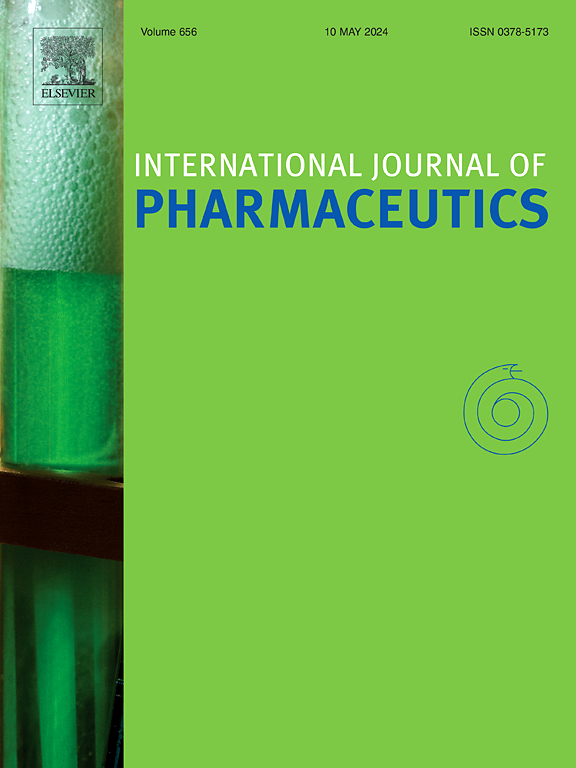Orodispersible films prepared by hot-melt extrusion versus solvent casting
IF 5.3
2区 医学
Q1 PHARMACOLOGY & PHARMACY
引用次数: 0
Abstract
This study investigated the influence of solvent casting and hot-melt extrusion manufacturing methods on the physical, chemical, and functional properties of orodispersible films with the same composition and incorporating a poorly soluble active pharmaceutical ingredient (API). Both techniques produced films that met pharmaceutical standards for disintegration and dissolution times. Solvent casting, the most used method, yielded films with homogeneous distribution of plasticizer, smoother textures, and greater flexibility. In contrast, hot melt extrusion, a solvent-free process, resulted in slightly brittle films due to uneven plasticizer integration, highlighting the impact of manufacturing parameters on film structure. Despite these differences, both methods exhibited similar chemical stability under varying humidity conditions, with API recrystallization occurring at higher humidity, particularly in films prepared by solvent casting. Increased humidity significantly reduced tensile strength, as water acted as a plasticizer, promoting API recrystallization and weakening the structure. Stability tests revealed that hot melt extrusion films retained their structural and chemical integrity over 12 months when stored in impermeable packaging bags. This study confirms the suitability of hot melt extrusion for industrial-scale ODF production, offering advantages such as a solvent-free process, reduced environmental impact, and adaptability for modern pharmaceutical manufacturing, provided formulation and process parameters could be carefully optimized.

热熔挤压与溶剂铸造制备多孔分散膜。
本研究考察了溶剂铸造和热熔挤压两种制造方法对含有难溶性活性药物成分(API)的相同成分的多孔分散膜的物理、化学和功能性能的影响。这两种技术生产的薄膜都符合崩解和溶解时间的制药标准。溶剂型铸造是最常用的方法,它的塑化剂分布均匀,质地光滑,柔韧性更强。相比之下,热熔挤压是一种无溶剂的工艺,由于增塑剂整合不均匀,导致薄膜略脆,突出了制造参数对薄膜结构的影响。尽管存在这些差异,但两种方法在不同湿度条件下表现出相似的化学稳定性,原料药在较高湿度下发生再结晶,特别是在溶剂铸造制备的薄膜中。湿度增加会显著降低拉伸强度,因为水起到增塑剂的作用,促进原料药再结晶,削弱结构。稳定性测试表明,热熔挤压薄膜在不透水的包装袋中储存12个 月后仍保持其结构和化学完整性。本研究证实了热熔挤压法适合工业规模的ODF生产,具有无溶剂工艺、减少环境影响、适应现代制药生产等优点,前提是配方和工艺参数可以仔细优化。
本文章由计算机程序翻译,如有差异,请以英文原文为准。
求助全文
约1分钟内获得全文
求助全文
来源期刊
CiteScore
10.70
自引率
8.60%
发文量
951
审稿时长
72 days
期刊介绍:
The International Journal of Pharmaceutics is the third most cited journal in the "Pharmacy & Pharmacology" category out of 366 journals, being the true home for pharmaceutical scientists concerned with the physical, chemical and biological properties of devices and delivery systems for drugs, vaccines and biologicals, including their design, manufacture and evaluation. This includes evaluation of the properties of drugs, excipients such as surfactants and polymers and novel materials. The journal has special sections on pharmaceutical nanotechnology and personalized medicines, and publishes research papers, reviews, commentaries and letters to the editor as well as special issues.

 求助内容:
求助内容: 应助结果提醒方式:
应助结果提醒方式:


